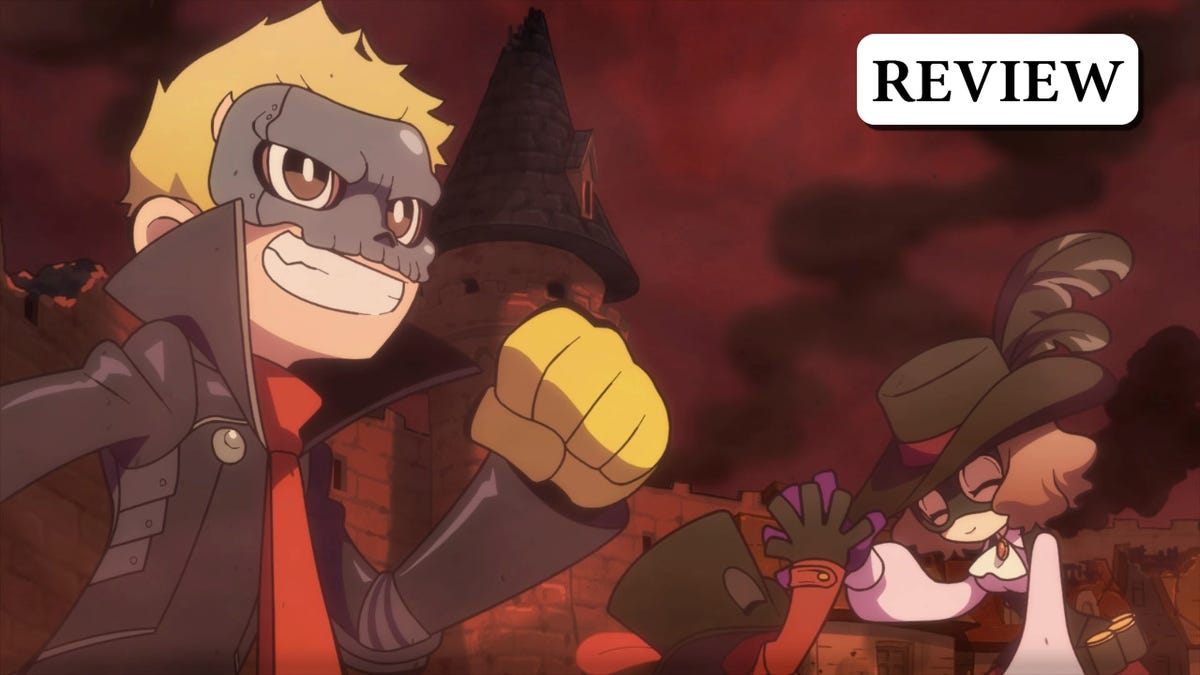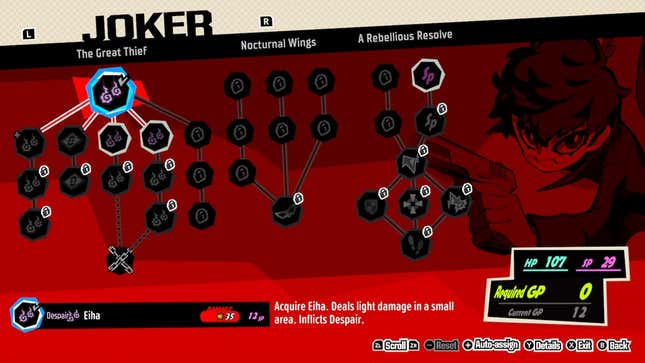
Persona 5 met with near-universal acclaim when it came to the West in 2017, and was widely credited with revitalizing the turn-based RPG after a years-long slump. In the six years since its release, some have argued that P5’s villains are excessively evil, but our real-world corporate overlords, power-hungry politicians, and morally depraved celebrities have only proven themselves to be exactly as Persona 5 has always portrayed them. This game and its spin-offs are about as subtle as a boot, but I’m done entertaining any notion that it’s an inaccurate depiction of those in power. The strategy RPG spin-off Persona 5 Tactica is one of the series’ best explorations of that villainy, on top of being one of the best remixes of the series’ turn-based mechanics.
Persona 5 Tactica slots itself into the tail end of Persona 5’s story, with the Phantom Thieves dragged into dungeons based around a character’s perception of someone they’re in conflict with. A woman who wants to enter a loveless marriage for power appears as a tyrannical dominatrix, while a father who wants to control his son shows up as a messiah-like figure who rules civilians all under the pretense of “love.” Tactica exaggerates power dynamics to the point that they’re afforded supernatural powers, but the actual relationships and trauma it explores still ring true.
Buy Persona 5 Tactica: Amazon | Best Buy | GameStop
The Phantom Thieves are pulled into this situation by proximity, but the game isn’t really about them. It’s about newcomers like the aggressive revolutionary Erina and Toshiro, a politician who has somehow found himself in the Metaverse. Sidelining the main cast is often the formula for Persona spin-offs, which can be frustrating. But by the end of Tactica I almost didn’t mind, as Erina and Toshiro rank very high on the list of Persona spin-off stars.
Those characters are the draw in the early hours, as Tactica’s turn-based battles start out sluggish and get more strategically satisfying as the game presses on. But the real attraction here is Persona 5 Tactica’s tales of the power of friendship—and seeing how these iconic characters continue to evolve—or don’t.
Bringing the tactics to Persona 5 Tactica
Admittedly, Tactica’s long, overly tutorialized opening chapter nearly did me in. It’s rote, depersonalized, and poorly paced. The first chunk of the game is deceptively simple as you get acquainted with moving across a grid, manipulating enemy formations, and gaining control of the map.
Gone are the elemental strengths and weaknesses that are key to victory in mainline Persona games. In Tactica, you’ll need to focus on displacement, holding positions, and using cover. Spells like Morgana’s wind attacks will now blow enemies out of cover and expose them for a follow-up attack. Ryuji’s electric abilities will shock an enemy so it cannot move. These are interesting recontextualizations of familiar gameplay mechanics but it takes too long to feel a sense of mastery and progress. For much of Tactica’s first world, my team of three felt disparate, rather than a cohesive unit aspiring to one goal.
Accessing new mechanics in Tactica unlocks a much more rewarding game. Once the training wheels are off, you can do chained combos with one or more party members and set up powerful finishers. You can also unleash Tactica’s version of an All-Out Attack by creating a triangle formation between all three of your party members, dealing high damage to any enemies within its boundary. I was always surprised by how liberally Tactica defined a triangle, and by swapping to other characters and moving them around, I managed to pull off several All-Out Attacks that spanned an entire map, often by happy accident.
Persona 5 Tactica makes numbers go up

Tactica’s puzzle-like battles can be rewarding, but character builds feel much more limited than genre contemporaries like Fire Emblem: Three Houses or Baldur’s Gate 3. Equipment and builds are largely boiled down to buying a more powerful firearm, or leveling up your skill tree for just one spell. Sub-Personas allow each party member to have a secondary set of skills, but they mostly feel like more of the same. Once you learn enemy weaknesses in the mainline Persona games, random encounters can begin to feel repetitive. Still, the style and rhythm makes them entertaining to play, like humming a familiar tune. The flow of battles in Tactica is similar, but this spinoff mostly relies on environmental twists to shake things up. Because of this, there’s little incentive to mix up your party from map to map, and that feels like a missed opportunity.
As enemies become more formidable and maps more intricate, movement is your best asset in Tactica, and some Phantom Thieves cover ground more quickly than others. This can be critical for later maps where you’ll have to operate one or more switches simultaneously in order to progress. But in terms of sheer attack and defense, pretty much everyone is well-equipped enough to handle any opponent, which makes characters feel interchangeable. I pretty much never had Ann or Haru in my party, because there was little reason to use them over anyone else.
Instead of having individual storylines to follow, Tactica largely focuses on the Phantom Thieves as a group. As a result, everyone is sort of Flanderized to make space for newcomers Erina and Toshiro to maintain the spotlight. Still, Tactica had enough lovely moments between the crew that I found myself still just as smitten with them as I’ve ever been, even as I’m left wondering how many more Persona 5 spinoffs we really need.
Tactica’s best scenes and fights may come later than I’d like, but there are some incredible moments buried under the usual Persona spinoff problems. I’m still not sure what the future holds for the Phantom Thieves, but I do know that I want to see them move forward, and Tactica doesn’t feel like a definitive note to go out on. This game isn’t really about them as a group of teenage vigilantes, but it is about what they’ve inspired in their heroics and the less-glamorous reality of fighting for a better future.
In the past, it was cleansing to play as the Phantom Thieves, coming together to bring down corrupt people in power. But these days, I’m so fucking tired. I’m exhausted. I bet you are, too. That’s why it’s refreshing to see that the Phantom Thieves and their newest allies are exhaused, too.

Even as people rally together against the powers that be in terms of fighting for reproductive healthcare and gender-affirming care, demanding our elected officials to call for a ceasefire between Israel and Palestine, or creatives fighting for better compensation for their work and the rights to their likenesses against further pushes for AI generated performances, our words go in one ear and out the other. We have to answer to people who don’t care about us and won’t even offer a cursory glance or statement that reassures us with false platitudes. The Phantom Thieves’ journeys have always felt like a power fantasy because, through supernatural means, they get to force change rather than beg and plead for their own humanity. But even in their world, the fight isn’t without its collateral damage.
Tactica examines the inherent dangers in fighting for a better world. But even as it paints a picture of the tortuous, insurmountable weight we all carry on our backs, Tactica believes it’s not only worth carrying, it is the responsibility of those who can drag that weight toward progress for those who can’t.
Change is like a muscle that you have to work every day. You’ll wake up sore the next morning, and want to just lie there until the pain goes away. If people have to get hurt for things to get better, is anything we’re fighting for even worth it? Those questions linger in my head every morning as I watch the world crumble around me, but at least stories like Persona 5 Tactica remind me that it’s worth getting out of bed in the morning, and that if the weight is too much to carry on my own, there are always going to be others there to help me lift it.
Buy Persona 5 Tactica: Amazon | Best Buy | GameStop
.
Credit : Source Post





